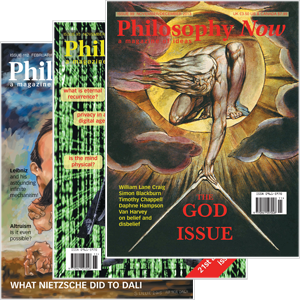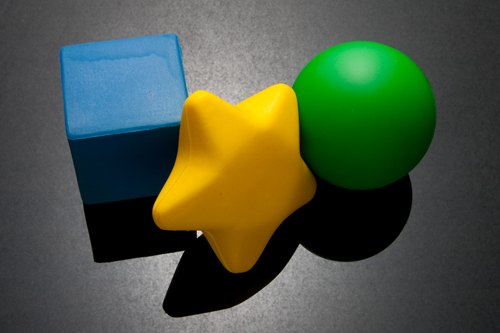
Your complimentary articles
You’ve read one of your four complimentary articles for this month.
You can read four articles free per month. To have complete access to the thousands of philosophy articles on this site, please
Articles
Seeing & Knowing
Shashwat Mishra explores the limits of perception via the Molyneux problem.
The Molyneux problem is a philosophical thought experiment that has been the subject of debate for centuries. It poses this question: If a person who has been blind from birth were to suddenly gain the ability to see, would they recognize objects they had previously only known through touch? The problem was first posed by William Molyneux (1656-98) – whose wife was blind – to the philosopher John Locke (1632-1704). Here we will explore some of the ways in which it has been approached by philosophers over the years.
Our brains use the information we gather through senses to create an experience or ‘mental picture’ of the world, allowing us to navigate our surroundings. The Molyneux problem arises from the fact that different senses provide us with different types of information about the world, and it is not always clear how these different types of information are combined to create a coherent picture. If a person who had learned the difference between a sphere and a cube by touch alone, for example, were to gain her sight, would she instantly recognize by sight which was the ball and which the cube? Or in more general terms we might ask, can visual and tactile information be combined in such a way as to create a single, unified perception of objects?
This problem has important implications for our understanding of perception and of the nature of knowledge. It challenges our assumptions about how we come to know the world, and forces us to consider the complex interplay between different senses and the brain.
Approaches to the Molyneux Problem
Over the years, philosophers have approached the Molyneux problem in a variety of ways. Some have argued that the problem is insoluble, while others have proposed solutions. Here are a few of the most prominent:
The Argument from Empirical Observation
Some have argued that the only way to resolve the Molyneux problem is through empirical observation. In other words, the only way to know whether a formerly blind person would be able to instantly recognize objects through sight is to see if someone who gains sight actually does immediately recognise objects. This approach has been criticized on the grounds that it is impossible to perform such an experiment in a controlled or ethical manner, even if one could find such a person before they had a chance to learn to reassociate their words with what they’re seeing.
The Argument from Neuroplasticity
Another approach to the Molyneux problem is to consider neuroplasticity. ‘Neuroplasticity’ refers to the brain’s ability to reorganize itself in response to changes in sensory input or thinking. Some philosophers have argued that the brain of the once-blind person would be able to reorganize itself in response to the new sensory input provided by sight, and so the person would eventually (sooner or later) be able to recognize objects through sight without anyone teaching them the difference. However, this view has been criticized on the grounds that it is not clear how fully the brain adapts to new sensory input. Anyway, testing this theory encounters the already-mentioned problems.
The Argument from the Unity of the Senses
One argument that has been used to support the idea that the previously blind person would be able to recognize felt objects through sight, is the argument from the unity of the senses. This holds that the different senses all contribute to a single, unified understanding of the world. According to this view, the brain combines information from different senses to create a coherent picture of the world. And so the once-blind person would be able to recognize objects through sight, even if they had only previously experienced them through touch, because it’s all part of the same unified understanding.
The Argument from Association
Another argument that has been used to support the idea that the ex-blind person would be able to recognize objects through sight, is the argument from association. This holds that the person would be able to associate the visual appearance of an object with the tactile sensations they had previously experienced, and so would be able to visually recognize objects. This view is different from the previous possibility in that the brain or mind is able to create connections between different types of sensory information, and so the once-blind person would be able to make connections with tactile memories in order to visually recognize objects.
The Argument from Incommensurability
Finally, some philosophers have argued that the Molyneux problem is an illustration of the incommensurability of different types of sensory experience. In other words, they argue that the visual and tactile experiences of an object are so different that they cannot be meaningfully compared or combined. According to this view, the once-blind person would not be able to automatically recognize objects through sight, just because the visual experience is fundamentally different from the tactile experience; and so they would have to learn which objects they were seeing from scratch.
Real World Implications
While it may seem like a purely theoretical problem, the Molyneux problem has important implications for the modern world, particularly in the field of sensory substitution. Sensory substitution is the use of technology to provide sensory information to people who are otherwise unable to generate it. For example, a device might convert visual (electromagnetic) information into auditory information, allowing a blind person to ‘see’ through sound.
Sensory substitution has the potential to radically transform the lives of people with sensory impairments, but it also raises philosophical questions about the nature of perception and the limits of sensory experience. The Molyneux problem is relevant to the study of sensory substitution just because it asks whether a person who has learned to recognize objects through one sense would be able to recognize those same objects through a different sense. While the Molyneux problem is focused specifically on the transition from touch to sight, it raises broader questions about the ability of the brain to integrate different types of sensory information. By studying the Molyneux problem and related philosophical concepts, we can gain a deeper understanding of the challenges and potential solutions in developing effective sensory substitution technologies. For example, if we understand the limitations of the brain’s ability to integrate different types of sensory information, we can design technologies optimized for those sensory channels that are most effective at conveying the specific types of information involved. This can lead to more effective sensory substitution devices, allowing people with sensory impairments to access information and experience the world in new ways.
In addition to its practical applications in the field of sensory substitution, the Molyneux problem also has broader implications for our understanding of perception and knowledge. By exploring the complex interplay between different senses and the brain, for example, we can gain a deeper appreciation of sensory experience in general. This can help us to develop more nuanced and sophisticated theories of perception, and knowledge that better reflects the complexities of the human experience.

Shapes © Stephen Edmonds 2009 Creative Commons 2
What Does The Problem Say To Technology?
While the Molyneux problem is often discussed in the context of human sensation, it also has broader implications for artifical intelligence, machine learning, data science, and cloud computing. Here are some ways in which the Molyneux problem can be relevant to each of these fields:
Artificial Intelligence
The Molyneux problem highlights the limitations of AI systems designed to perform specific sensory tasks, such as recognizing objects or detecting patterns in data. While these systems may be very effective at the tasks for which they’re designed, they will struggle to generalize to new tasks or situations. For example, an AI system trained to recognize faces may not be able to recognize the same faces in different poses or lighting conditions, and may struggle to recognize faces of people from different ethnic backgrounds too. The Molyneux problem suggests that AI systems must be designed with more sensory flexibility and adaptability.
Machine Learning
The Molyneux problem also highlights the limitations of machine learning algorithms that are trained on specific datasets. While these algorithms may be very effective at recognizing patterns in the data they’re trained on, they may struggle to generalize to new datasets or situations. This is known as the problem of ‘overfitting’ – where a machine learning model becomes too specialized to the specific dataset it was trained on and is unable to generalize to new data. The Molyneux problem suggests that machine learning algorithms also need to be designed with more robustness and flexibility.
Data Science
The Molyneux problem is relevant to data science in that it highlights the limitations of relying on specific data to understand the world. While data can provide valuable insights into patterns and trends, it is often incomplete and subject to biases and other limitations. The Molyneux problem suggests that data scientists optimally need to incorporate other sources of information, such as expert knowledge and interpretations, or diverse data sets, in order to make sense of complex and often ambiguous data.
Cloud Computing
The Molyneux problem is relevant to cloud computing in that it highlights the limitations of centralized computing systems which are designed to process and store large amounts of specific types of data. While these systems may be very effective at processing these specific types of data, they usually struggle to handle the variability and complexity of real-world data. The Molyneux problem suggests that cloud computing systems should be designed with more decentralization and flexibility, in order to account for the wide variety of data types and processing needs that arise in different situations.
Overall, the Molyneux problem highlights some of the challenges of designing machines and algorithms that can make good sense of the world’s complexity. By continuing to explore these, and related philosophical concepts, we can deepen our understanding of the problems and possibilities of modern technology, and develop more adaptable systems that can operate well in a complex, ever-changing world
The Molyneux problem has important implications for our understanding of perception and the limits of sensory experience. By continuing to explore the problem and related concepts, we can deepen our understanding of these limits, and develop more effective technologies that allow people with sensory impairments to experience the world in new and enhanced ways.
© Shashwat Mishra 2024
Shashwat Mishra enjoys exploring how philosophical issues influence our behaviour and shape how we interact. He also plays a lot of quizzes, listens to Classic Rock, and watches soccer, F1 and basketball.









